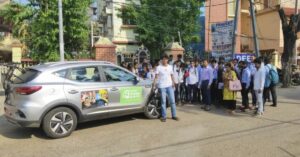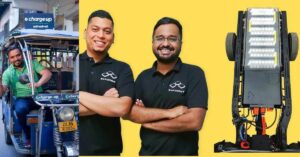Startup Makes EVs Truly Sustainable, Recycles 1000 Tonnes of Li-ion Batteries/Year
Making lithium-ion batteries, which contain cobalt and lithium, comes with significant economic and environmental costs. Enter Lohum, a Noida-based integrated lithium-ion battery manufacturer and recycler addressing the most critical challenge facing the EV sector globally.
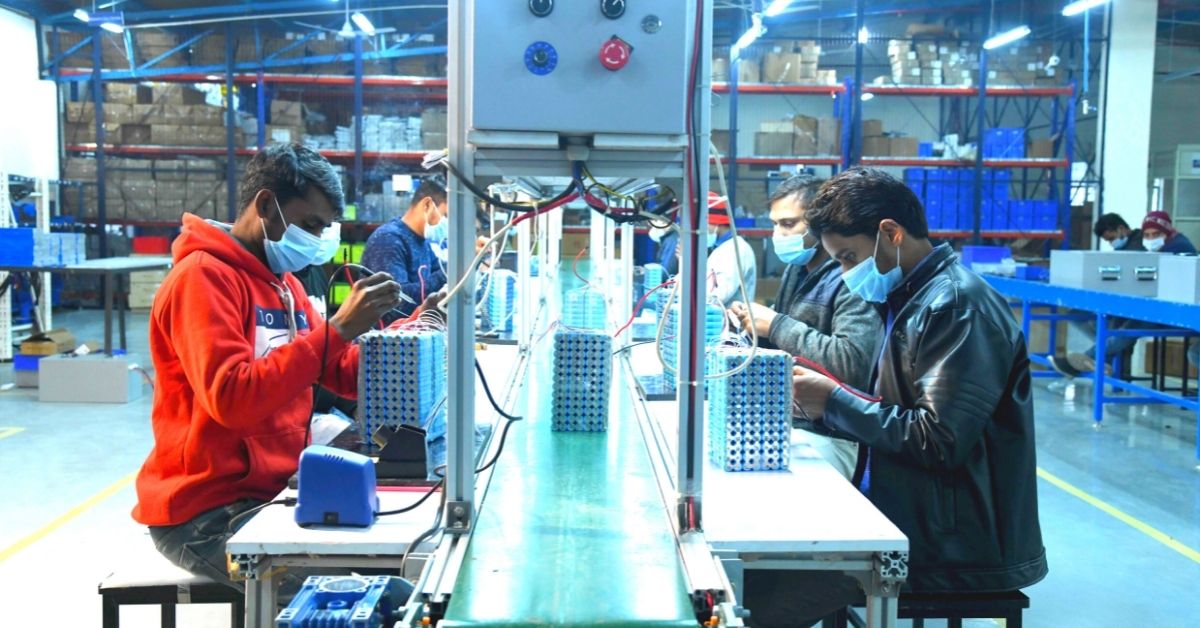
The introduction of lithium-ion (Li-ion) batteries has revolutionised transport technology. We wouldn’t be witnessing the current electric vehicle (EV) revolution without them. However, with the production of these batteries, which contain lithium and cobalt, comes associated with environmental and social costs. In the Democratic Republic of Congo, which accounts for 60% of the world’s supply of cobalt, a large number of unregulated mines use children as miners.
Children as young as 7 “breathe in cobalt-laden dust that can cause fatal lung ailments while working tunnels that are liable to collapse,” notes this report in The Guardian. Meanwhile, lithium mining has resulted in significant loss of groundwater in South America, while toxic leaks resulting from the process have poisoned water bodies in Tibet.
To lessen the burden on the environment, while meeting the growing demand for EVs, one possible solution could be recycling these Li-ion batteries.
As the United States Environmental Protection Agency (EPA) notes, “Recycling the [Li-ion] batteries avoids air and water pollution, as well as greenhouse gas emissions. It also prevents batteries from being sent to facilities that are not equipped to safely manage them and where they could become a fire hazard.”
Unable to view the above button? Click here
Given that a cumulative total of 15 million tonnes of Li-ion batteries worldwide are due to reach their end of life by 2030, recycling has become an absolute necessity.
Responding to these circumstances, Rajat Verma and Justin Lemmon established Lohum Cleantech Private Limited, a Delhi NCR-based integrated lithium-ion battery manufacturer and recycler, in 2018, to lower costs of electrification both economically and environmentally.
“Besides sustainability concerns, we also realised that the entire value chain associated with lithium-ion batteries was very concentrated in the hands of China — whether we are talking about mining, refineries, cell manufacturing or battery production. This is also a critical geo-strategic problem,” says Rajat, who has over a decade of industry experience working in the e-waste segment.
He adds, “When we started our journey with Lohum, the two key problems we wanted to attack at a macro-level were sustainability and the geo-strategic problem. Our mission is to leverage technology to address both those problems in a meaningful way.”
Today, Lohum owns two facilities in the Delhi-NCR area, with a total capacity of 300 MWh across li-ion battery manufacturing for two-wheelers, three-wheelers and stationary ESS (energy storage systems used in utilities, power producers and grid operators and commercial buildings for power backup). First-life battery manufacturing is its leading business unit. Largest volume of demand for their batteries comes from their two-wheeler and three-wheeler market.
To the uninitiated, the first-life battery means creating batteries from new lithium-ion cells and employing them in various applications. When an EV battery arrives at its end-of-life, the battery is repurposed for a second-life in alternative applications or recycled to obtain the raw materials that went into it. In other words, a second life battery means taking back battery packs from the market, harvesting the good cells from them and putting them back into EVs or a stationary energy storage system application like an inverter battery.
Lohum offers first-life battery packs for EV mobility ranging from 1 kWh to 15 kWh. All battery systems for OEMs and ESS (stationary energy storage systems) are customised as per the requirement of the respective OEM. For example, a two-wheeler vehicle wants a battery that can help accelerate the vehicle, whereas a three-wheeler does not go beyond 30 km/hr and wants a battery that does not require to discharge at a fast rate, but consistent for longer distances. These can be charged anywhere with proper and genuine charging infrastructure.
The key raw materials required for manufacturing a Li-ion cell are lithium, cobalt, nickel and graphite. Barring graphite, these resources are almost non-existent in India. India, like most of the world, relies on countries such as Chile, Congo, China and Australia for sourcing them.
India also does not have the technical capability to produce the unit size of Li-ion cells, which are imported from other countries and added to the BMS (battery management systems) and customised as per the requirements of each client. The venture is also a global leader in battery re-use for mobility applications with over two million operational miles so far, claims Rajat.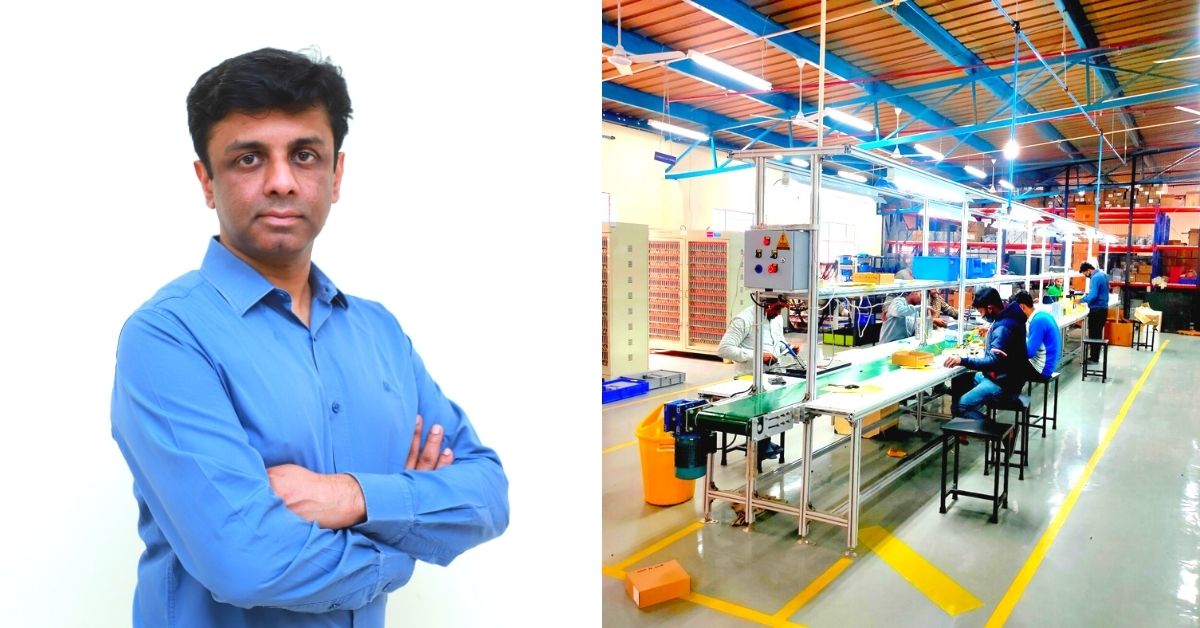
How does Lohum recycle Li-ion batteries?
As a first step to build the Li-ion circular ecosystem, Lohum has a dedicated battery collection center that gets a continuous supply of end-of-life batteries from a network of responsible suppliers. The company has multiple partners and OEMs that help it collect the batteries.
As a document shared by Lohum with The Better India states:
During the next step, these batteries are carefully segregated according to form factors and chemistries to prepare them for cell and module testing.
These cells are rigorously tested to help sort usable cells from non-useable cells.
- A usable cell still has a good amount of life left in them, and can be successfully employed for battery reuse, as second-life batteries.
- The non-useable cells are sent for material extraction, to extract the maximum amount of critical battery materials and valuable metals.
“Finally, the extraction process begins with shredding, where the non-useable battery cells are shredded to separate plastics, copper and aluminum foil from the black mass. The extraction process includes a mechanical shredding process combined with a hydrometallurgical process that produces lithium, cobalt, nickel, manganese and graphite to be re-used in new batteries or other industrial applications. Contrary to the view that recycling requires tolling fees to be profitable, especially at smaller scales, our process is profitable without a tolling fee and at smaller footprints,” explains Rajat, while describing the recycling process.
Today, the venture processes about 1,000 tonnes of lithium-ion batteries per annum. They are in the process of expanding that capacity to go upto 10,000 tonnes per annum.
“A typical two-wheeler EV battery weighs about 15 kgs, which means in 1 tonne, you will have about 60 or more such batteries. In processing 1,000 tonnes, we have the capacity to handle approximately 60,000 2-wheeler batteries per annum. That is the scale at which we are operating. We are looking to scale this up by 10x from 60,000 two-wheeler batteries to 6,00,000. However, given the scale of the problem, our objective to process 10,000 tonnes annually will not be sufficient to solve even a fraction of the problem. We would ideally like to scale up our operations even further and love to see more entrepreneurs participate in this ecosystem and do their bit to make this green and sustainable,” adds Rajat.
Looking at the faster adoption of EVs, there will be an exponential increase in demand for Li-ion batteries. “Early forecasts project the demand of its raw materials to grow by 13x for Lithium and Nickel, about 12x for Graphite and 6x for Cobalt by 2028. Forecasts estimate almost 200GWh of used batteries will be available for re-use or recycling by 2027 and representing greater than an $11Bn market,” notes the venture in the document shared with The Better India.
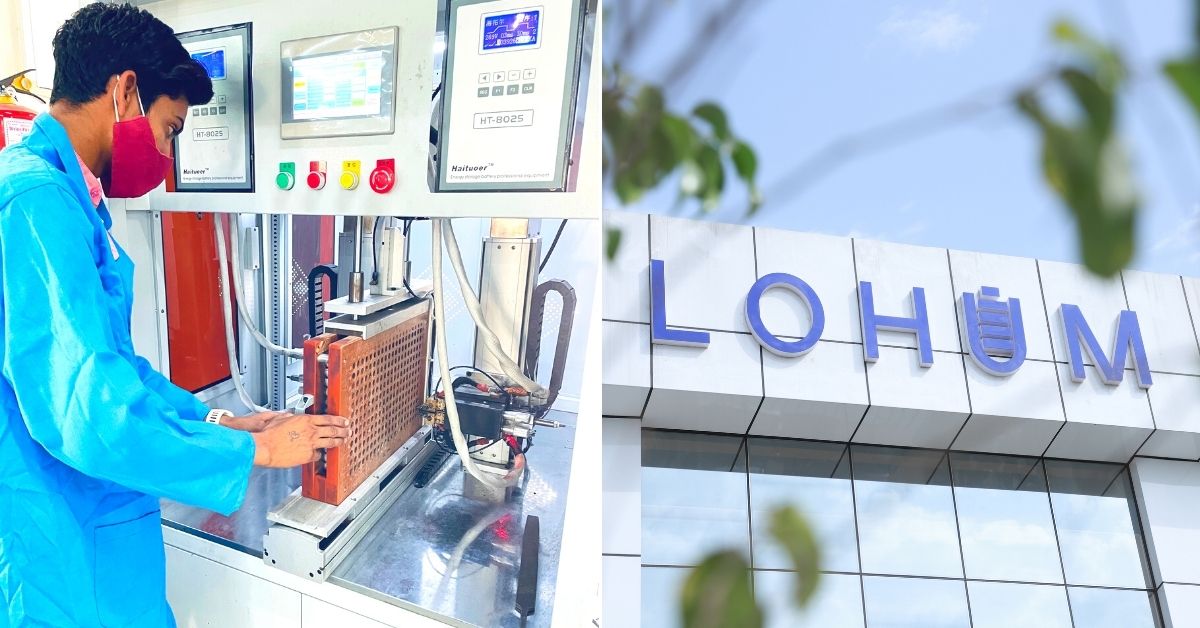
Ways To Dispose Battery Waste
The Government of India has largely leveraged the same Extended Producer Responsibility (EPR) framework mandated for e-waste generating companies to come up with the current draft rules for EV OEMs to deal with the waste generated from their products. These draft rules for the management of used EV batteries haven’t been notified yet and are still up for discussion.
Globally, OEMs are already very concerned because if they do not take care of battery recycling, they will add to the environmental cost, which will defeat the purpose of championing EVs in the first place. The concern is not merely environmental but also economic. A lot of OEMs are worried about the cost of disposal.
“The entire EV ecosystem will have to solve the problem of battery waste collectively. It’s not just OEMs, but there is an entire dealer and battery service network out there,” says Rajat, adding, “India has to really get its act together in transportation of used batteries for recycling because they can catch fire.”
“You have to ensure that your battery is in as discharged a state as possible during transportation. That ultimately determines how safe the batteries are. We have our own secret sauce of how we discharge our batteries at a rapid pace,” claims Rajat.
Business, meanwhile, is looking good. Bootstrapped till 2020, the company raised $7 million investment from institutional investors led by Baring PE Partners India earlier this year.
The company is planning to raise another round of funding to the tune of Rs 300 crores. Due to the potential and the forecast in demand for EV battery packs, it is working towards setting-up one of the largest Li-ion factories in the world with a capacity of 3 GWh or 3,000 MWh per annum in Greater Noida.
(Edited by Yoshita Rao)
Like this story? Or have something to share? Write to us: [email protected], or connect with us on Facebook and Twitter.
This story made me
- 97
- 121
- 89
- 167
Tell Us More
We bring stories straight from the heart of India, to inspire millions and create a wave of impact. Our positive movement is growing bigger everyday, and we would love for you to join it.
Please contribute whatever you can, every little penny helps our team in bringing you more stories that support dreams and spread hope.






